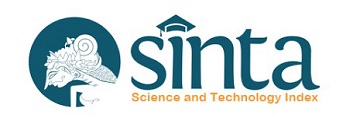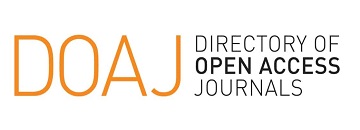Modeling suitable habitats of maleo (Macrocephalon maleo sal. müller 1846) in Gorontalo

Downloads
Downloads
Allouche. O., Tsoar, A., & Kadmon, R. (2006). Assessing the accuracy of species distribution models: prevalence, kappa and the true skill statistic (TSS). Journal of Applied Ecology, 43(6), 1223–1232.http://dx.doi.org/10.1111/j.1365-2664.2006.01214.x
Apriadi, S.T. (2009). Analisis preferensi habitat Burung Maleo (Macrocephalon maleo) di Taman Nasional Lore Lindu Sulawesi Tengah. Tesis tidak diterbitkan, Sekolah Pascasarjana IPB, Bogor.
Baker, G.C. (2002). Conservation status of Maleo Macroplalon maleo nesting grounds: an update. Megapode Newsletter , 16,4-6
CITES. (2017). Convention On International Trade In Endangered Species Of Wild Fauna
and Flora. Appendices I, II, and III. Valid from 4 October 2017.
De, K., Ali, S.Z., Dasgpta, N., Uniyal, V.P., Johnson, J.A., & Hussain SA. (2020). Evaluating performance of four species distribution models using Blue-tailed Green Darner Anax guttatus (Insecta: Odonata) as model organism from the Gangetic riparian zone. Journal of Threatened Taxa, 12(14), 16962–16970. http://dx.doi.org/10.11609/jott.6106.12.14.16962-16970
Jamili, Analuddin, & Rudia, L. O. A. P. (2015). Studi karakteristik mikro-habitat burung maleo (Macrocephalon maleo) pada kawasan Taman Nasional Rawa Aopa Watumohai (TNRAW) Sulawesi Tenggara. Biowallacea, 2(1), 182–195.
Karim, H.A., Najib, N.N., Darman, D., & Alam, A. (2020). Estimation of population and nesting behavior of Maleo bird (Macrochepalon maleo) in TWA Towutilake, East Luwu District. Gorontalo Journal Of Forestry Research, 3(2), 100–113.
Karim, F.R., Mas’yud, B., & Hernowo, J.B. (2022). Nesting site characteristics and egg hatching success of Maleo (Macrocephalon maleo) in Hungayono Sanctuary, Gorontalo. JPSL, 12(4), 570–578. http://dx.doi.org/10.29244/jpsl.12.4.570–578
Karim, H.A., Najib, N.N., & Sofyan, N. (2022). Vegetation characteristics of the Maleo Bird (Macrochepalon maleo) habitat at Natural Tourism Park of Towuti Lake, South Sulawesi. Jurnal Wasian, 9(1), 570–578
Khan, A. M., Li, Q., Saqib, Z., Khan, N., Habib, T., Khalid, N., Majeed, M., & Tariq A. (2022). MaxEnt modelling and impact of climate change on habitat suitability variations of economically important Chilgoza Pine (Pinus gerardiana Wall.) in South Asia. Forests, 13, 715. http://dx.doi.org/10.3390/f13050715
Lemenkova, P. (2020). Using R packages 'Tmap', 'Raster' And 'Ggmap' for cartographic visualization: an example of dem-based terrain modelling of Italy, Apennine Peninsula. Zbornik radova - Geografski fakultet Univerziteta u Beogradu 68, 99-116. http://dx.doi.org/10.5937/zrgfub2068099L.
MacKinnon, J.R., & Phillipps, K. (1993). A field guide to the birds of Borneo, Sumatra, Java, and Bali, the Greater Sunda Islands. Oxford University Press.
Mao, M., Chen, S., Ke, Z., Qian, Z., & Xu, Y. (2022). Using MaxEnt to predict the potential distribution of the little fire ant (Wasmannia auropunctata) in China. Insects, 13, 1008. http://dx.doi.org/10.3390/insects13111008.
Marcot, B.G. (2012). Metrics for evaluating performance and uncertainty of Bayesian network models. Ecological Modelling, 230, 50–62. http://dx.doi.org/10.1016/j.ecolmodel.2012.01.013
Maulany, R.I., Aliem, M.I., Nasri, & Ismail. (2021). A preliminary study of Maleo (Macrocephalon maleo) nesting in Kambunong Cape, West Sulawesi. IOP Conf. Ser.: Earth Environ. Sci. 681 012124
Reddy, M.T., Begum, H., Sunil, N., Pandravada, S. R., & Sivaraj, N. (2015). Assessing climate suitability for sustainable vegetable roselle (Hibiscus sabdariffa var. sabdariffa l.) cultivation in India using Maxent. Agricultural and Biological Sciences Journal, 1(2), 62-70.
Ruete, A., Leynaud, G. C. (2015). Goal-oriented evaluation of species distribution models’ accuracy and precision: True Skill Statistic profile and uncertainty maps. PeerJ PrePrints 3: e1208v1. http://dx.doi.org/10.7287/peerj.preprints.1208v1
Shcheglovitova, M., & Anderson, R.P. (2013). Estimating optimal complexity for ecological niche models: a Jackknife approach for species with small sample sizes. Ecol. Model. 269, 9–17.
Song, D., Li, Z., Wang, T., Qi, Y., Han, H., & Chen Z. (2023). Prediction of changes to the suitable distribution area of Fritillaria przewalskii Maxim. in the Qinghai-Tibet plateau under Shared Socioeconomic Pathways (SSPS). Sustainability 15, 2833. http://dx.doi.org/10.3390/SU15032833.
Tasirin, J.S., Iskandar, D.T., Laya, A., Kresno, P., Suling, N. (2021). Maleo Macrocephalon maleo population recovery at two Sulawesi nesting grounds after community engagement to prevent egg poaching. Global Ecology and Conservation, 28, e01699.
Thoha, A.S,, Triani, H. (2021). A spatial model of forest and land fire vulnerability level in the Dairi District, North Sumatra, Indonesia. Biodiversitas, 22, 3319-3326. http://dx.doi.org/10.13057/biodiv/d220827.
Utami, N., Sapei A., & Apip. (2017). Landuse change assessment and its demand projection in Batanghari River Basin, Sumatera, Indonesia. Limnotek, 24 (2), 52-60
Zhao, W.L., Chen, H.G., Lin, L., Cui, Z.J., & Jin, L. (2018). Distribution of habitat suitability for different sources of Fritillariae cirrhosae bulbus. Chin. J. Ecol. 37, 1037–1042.








